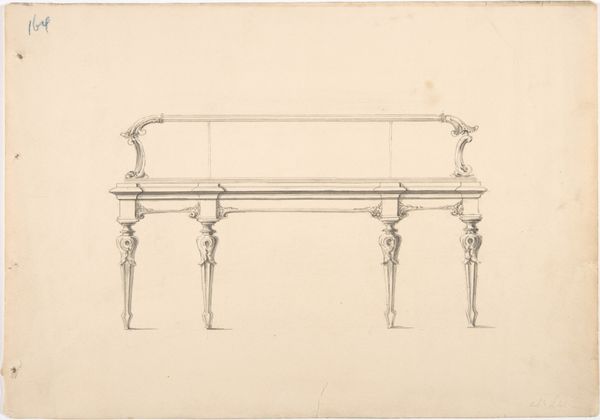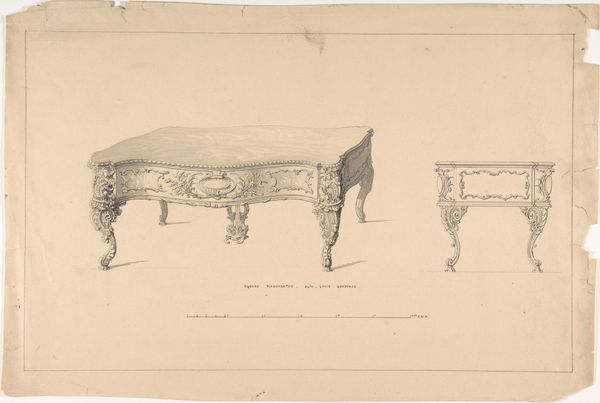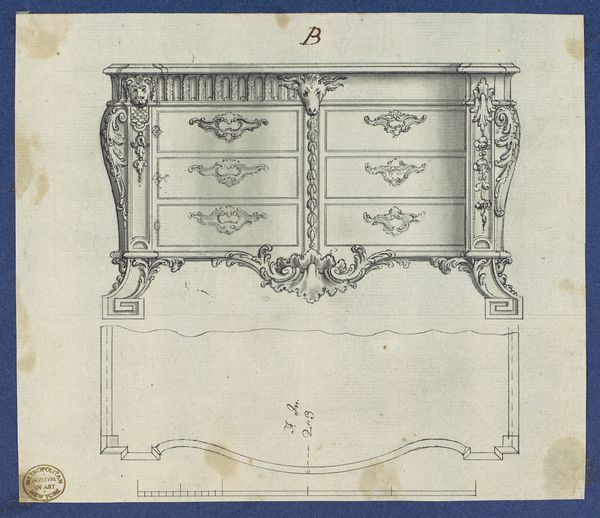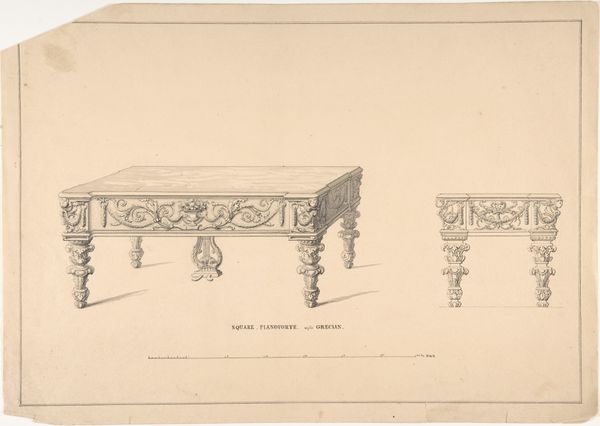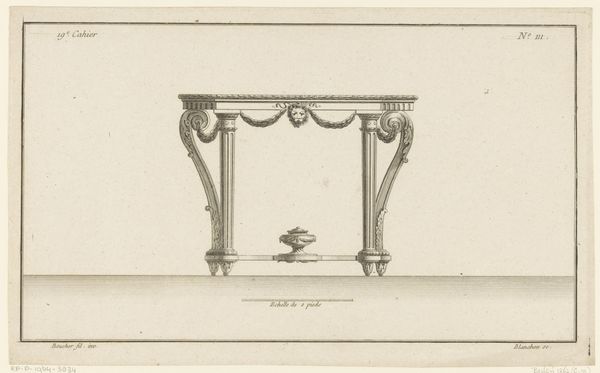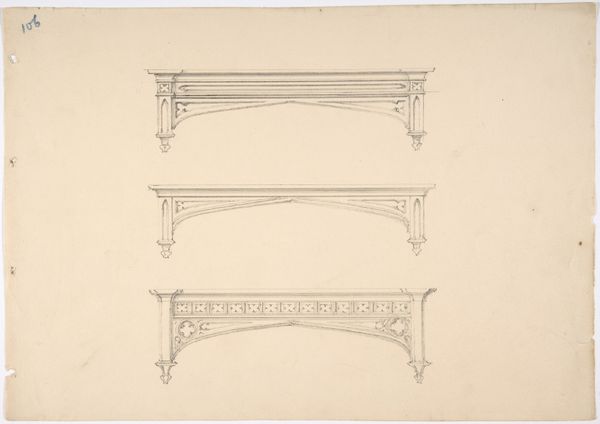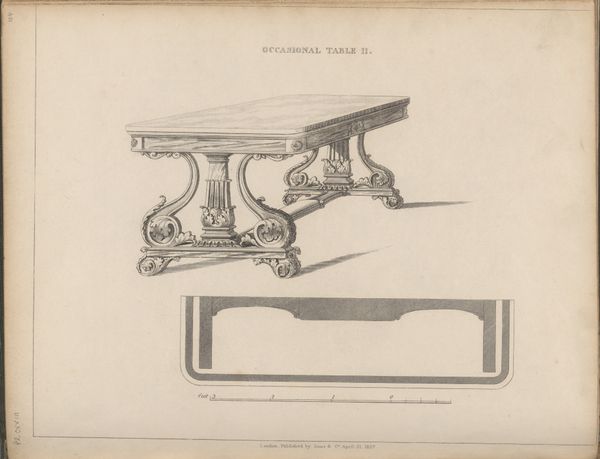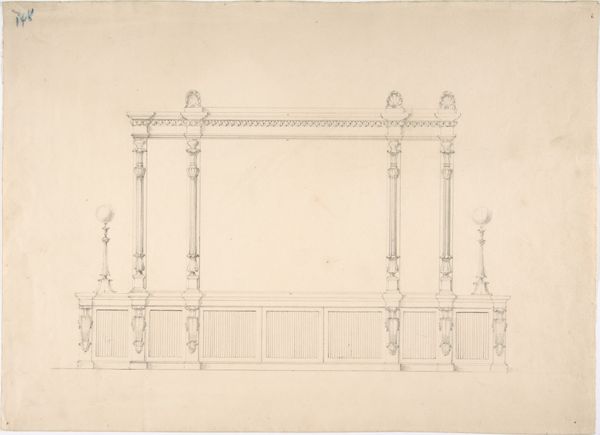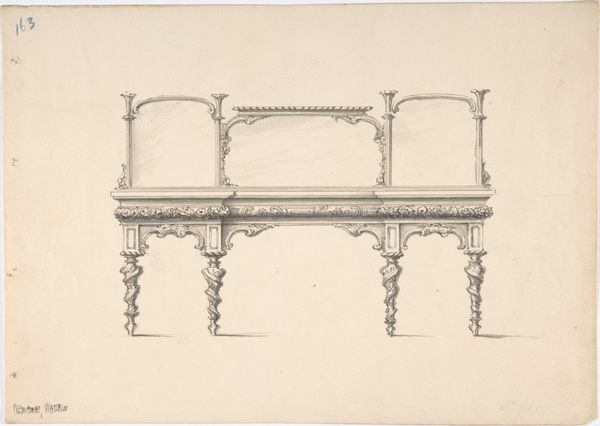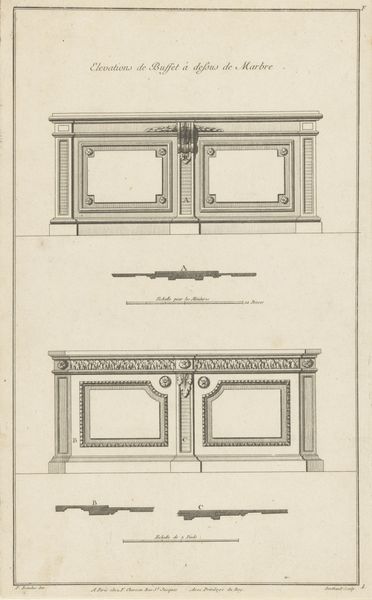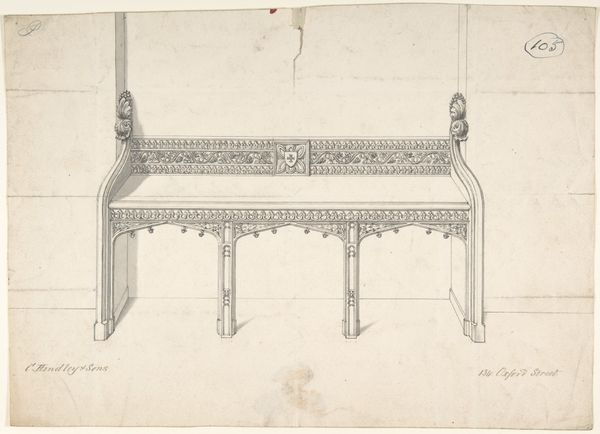
Design for a Small Rectangular Table with Greek Ornament 1800 - 1900
0:00
0:00
drawing, print, pencil
#
drawing
#
neoclacissism
# print
#
pencil sketch
#
geometric
#
pencil
#
decorative-art
Dimensions: sheet: 3 5/8 x 4 9/16 in. (9.2 x 11.6 cm)
Copyright: Public Domain
Editor: This caught my eye. It's a design, likely from between 1800 and 1900, for a small rectangular table with Greek ornamentation. It’s an anonymous work, just pencil and possibly some print on paper. I find the sketch itself quite charming, but I wonder about its classical inspiration. What speaks to you most profoundly when you consider this piece? Curator: I’m drawn to how the anonymous artist synthesizes the Neoclassical obsession with antiquity with a practical object. Note how the table legs are adorned with what appears to be an abstracted palmette motif. This ancient Greek design element—originally derived from stylized lotus leaves or palm fronds—suggests growth, prosperity, and even immortality. Editor: So the legs are more than just support; they're symbolic? Curator: Precisely. The geometric patterns, running in bands across the table's frieze, remind me of meander patterns common in Greek art. This symbol, suggestive of the eternal flow of life and the complex paths of thought, lends the design an air of intellectual sophistication and refined taste. It reveals the symbolic vocabulary popular at that time. How do you think such symbols might be understood differently today? Editor: Well, without context, they could easily be seen as just decorative elements, the deeper meaning lost over time. I hadn’t thought about furniture design as something laden with cultural memory. Curator: Indeed! This sketch acts as a potent reminder that even the most utilitarian objects are often imbued with layers of symbolic meaning that reflect cultural values, psychological longings, and collective memory. Editor: I'll definitely be looking at furniture differently from now on. Thanks for highlighting that blend of practicality and cultural symbolism!
Comments
No comments
Be the first to comment and join the conversation on the ultimate creative platform.

